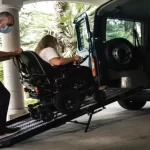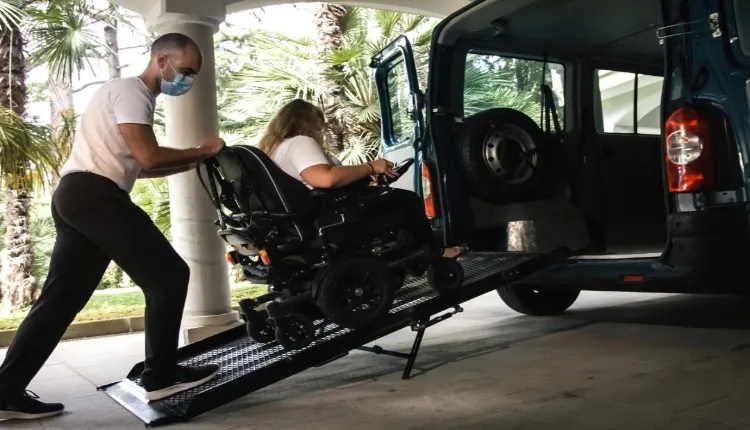Transportation plays an important role in providing comfort care to those in medical need. Whether it involves getting to and from medical appointments, accessing specialty care facilities, or simply enjoying travel for a better quality of life, proper transportation can greatly impact the well-being of those in need. In this article, we’ll explore ten essential tips for improving comfort care transportation to address the unique needs and challenges facing this important aspect of healthcare.
Understanding the Importance of Comfort Care Transportation
An important component of transportation and healthcare, especially for those who need comfort care. Access to reliable and comfortable transportation is critical to their overall well-being, whether for elderly patients, people with disabilities, or those with chronic illnesses. Comfort care transportation goes beyond just getting from point A to point B; This includes the need for compassionate, safe and appropriate transport services that meet the specific needs of these individuals.
Tip 1: Accessibility and Accommodation
One of the primary considerations in improving palliative care transportation is ensuring accessibility and accommodations for individuals with varying mobility needs. This involves providing vehicles with wheelchair ramps, lifts and other features to facilitate easy boarding and alighting. Additionally, vehicles need to be spacious enough to accommodate mobility aids and provide a comfortable ride.
Tip 2: Trained and Compassionate Staff
The quality of personnel providing transport services is paramount. It is critical to have a team of trained and compassionate individuals who understand and cater to the unique needs of palliative care patients. These include sensitivity to physical limitations, effective communication skills, and the ability to provide support with empathy and respect.
Tip 3: Appointment Scheduling and Flexibility
Comfort care transportation often involves regular medical appointments and treatments. Providing a flexible scheduling system that allows for on-time pickups, adjustments for unexpected delays, and the ability to accommodate last-minute changes to appointments. This ensures that patients receive the care they need without undue stress or inconvenience.
Tip 4: Comfort and Safety
Patient comfort and safety should be a top priority during transport. This includes maintaining a fleet of well-maintained vehicles equipped with safety features such as secure seats, restraints and climate control. Additionally, ensuring a smooth and gentle ride reduces discomfort for patients with medical conditions. And it heals a lot.
Tip 5: Specialized Transportation Services
In some cases, patients may require specialized transportation services to suit their specific medical needs. This may include non-emergency medical transport for those requiring assistance beyond standard transport, such as oxygen support, medical supervision, or special seating.
Tip 6: Communication and Coordination
Effective communication and coordination between healthcare facilities, caregivers and transportation providers is essential for seamless comfort care transportation. This includes sharing relevant medical information, schedule details and specific requirements to ensure a smooth and efficient transportation experience.
Tip 7: Community Engagement and Support
Engaging with the local community and utilizing community resources can improve palliative care transportation services. There is a need to collaborate with voluntary organisations, local businesses and community groups who can provide additional support, resources and funding to improve transport options.
Tip 8: Technology Integration
Integrating technology into comfortable transportation services can streamline operations and improve the overall experience. This may include mobile apps for scheduling rides, tracking vehicle location, and providing real-time updates to patients and caregivers. Additionally, incorporating telehealth options into transport vehicles can further support patients’ medical needs during transit.
Tip 9: Patient-Centered Approach
Adopting a patient-centered approach is critical to improving comfort care delivery. This involves actively seeking feedback from patients and their carers to understand their experiences, preferences and areas for improvement. By incorporating patient feedback, transportation services can be tailored to better meet the unique needs of individuals receiving comfort care.
Tip 10: Continuous Training and Quality Assurance
Continuous training for transport staff and regular quality assurance measures are needed to maintain high standards of service. This includes ongoing education on patient care, safety protocols and best practices for accommodating individuals with medical needs. Quality assurance programs can help identify areas for improvement and ensure that transportation services provided consistently meet the highest standards.
Conclusion
Improving palliative care transportation is a multifaceted endeavor that requires a comprehensive approach focused on accessibility, compassion, safety, and efficiency. By implementing the tips outlined in this article, transportation providers, health care facilities, and caregivers can work together to enhance the transportation experience for individuals in need of comfortable care. Ultimately, prioritizing the unique needs of these individuals and striving for continuous improvement in palliative care delivery can significantly contribute to their overall well-being and quality of life.
To Get Any News: Today World Newsy






